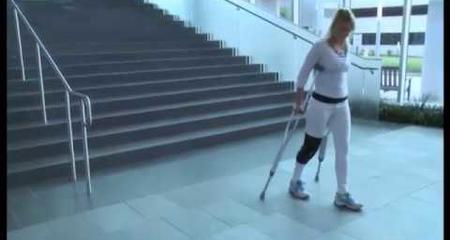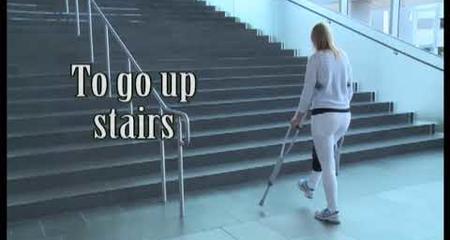The Foot and Ankle Program offers virtually every surgical approach available to treat acute and chronic foot and ankle conditions. Not every patient will need surgery, and we have extensive options in non-surgical medical care of the foot and ankle. We perform everything from bunion procedures to advanced tendon reconstruction and ankle replacement procedures. We also teach other physicians how to use new surgical techniques and approaches to improve patient outcomes.
Our surgeons are among the best in their field, and are nationally known and respected. They have the depth and breadth of experience to treat the entire spectrum of foot and ankle disorders. Because Froedtert & the Medical College form a leading academic medical center, we see the most complex foot and ankle disorders and have the resources to treat them effectively.
When Surgery is Required
Conditions that may be treated surgically include:
- Arthritis of the forefoot, midfoot, hindfoot and ankle
- Bunions, hammer toe and Morton’s neuroma
- Metatarsalgia, an overuse condition marked by pain and inflammation in the ball of the foot, and Morton's neuroma, a painful condition that also affects the ball of the foot
- Diabetic limb disorders
- Rheumatoid arthritis
- Achilles tendon injuries or ankle instability
- Adult-acquired flatfoot (posterior tibial tendon dysfunction)
- Haglund’s deformity or “pump bump”
Foot and Ankle Surgery Procedures
Ankle Replacement
Learn more about Ankle Replacement, a treatment for ankle arthritis and injuries.
Arthroscopic Decompression
Bones spurs in the ankle joint can cause pain and a variety of ankle problems. The bone spurs can be removed by arthroscopic decompression, a minimally invasive surgical procedure.
Ankle Fusion
Ankle fusion can be an effective solution for ankle arthritis and ankle instability. During an ankle fusion procedure, arthritic bone is removed to create good bony surfaces for fusion. Two permanent screws are placed across the joint to secure the fusion.
Bunion Surgery or Bunionectomy
Many different types of surgeries are used to correct bunions, and more than one type may be done at the same time based on each patient’s condition. In a traditional bunionectomy, part of the metatarsal bone (the part that is bulging out from the foot) is removed.
Other bunion surgery may realign the ligaments around the big toe joint, remove just a part of the bone, reshape the bone, fuse the joint where the big toe joins the foot, and implant an entire or partial joint.
Flatfoot Correction
Adult-acquired flatfoot or flatfoot caused by injury may be treated surgically. In patients with a flexible deformity and minimal arthritic changes, a posterior tibial tendon transfer may be performed, usually in combination with a corrective cut in the heel bone called a medial displacement calcaneal osteotomy and/or a subtalar arthroereisis implant.
In patients with a fixed deformity or arthritis, a triple arthrodesis procedure may be performed, which involves fusing joints of the hindfoot. This may be combined with other midfoot fusions to maintain optimal alignment.
Forefoot Reconstruction for Rheumatoid Arthritis
Forefront reconstruction surgery for rheumatoid arthritis involves fusion of the joint in the great toe (hallux). It is supported with a screw that remains in the foot. The prominent metatarsal heads are removed to relieve inflammation in the joints, reduce the dislocated toes and relieve discomfort under the ball of the foot (the metatarsus, the middle part of the foot, is composed of five long bones). Pins are placed in the toes to maintain proper alignment.
Hammer toes or claw toes can also be corrected by removal of the joint (knuckle) and release of the contracted tendons.
Haglund's Deformity Surgery
If conservative treatment does not reduce the heel inflammation of Haglund's deformity, or "pump bump," the next choice is surgery. Procedures may be done to surgically remove the deformity and debride (remove dead tissue and foreign material) or reattach the Achilles tendon.
Hallux Rigidus (Stiff Big Toe) Surgery
Surgery to correct a stiff big toe depends on the extent of arthritis and how it affects the joint space. If the joint space is well preserved but bone spurs (osteophytes) are restricting motion, cheilectomy will be performed to remove the bone spurs around the joint. If the arthritis is extensive, fusion of the big toe joint (metatarsophalangeal joint or MTP joint) may be necessary. Arthritic bone is removed from the joint to create good bony surfaces for fusion. Two permanent screws are placed in the foot to secure the fusion.
Toe Correction Surgery
Hammer toes, mallet toes and other toe deformities can be surgically corrected if other treatment options are ineffective. The procedure often requires removal of the joint of the involved toe. It may also be necessary to lengthen or release contracted tendons. A pin is placed through the toe to stabilize it while it heals. The pin is removed about four to six weeks after surgery, and recovery continues from there.
Virtual Visits Are Available
Safe and convenient virtual visits by video let you get the care you need via a mobile device, tablet or computer wherever you are. We'll assess your condition and develop a treatment plan right away. To schedule a virtual visit, call 414-777-7700.
More to Explore





